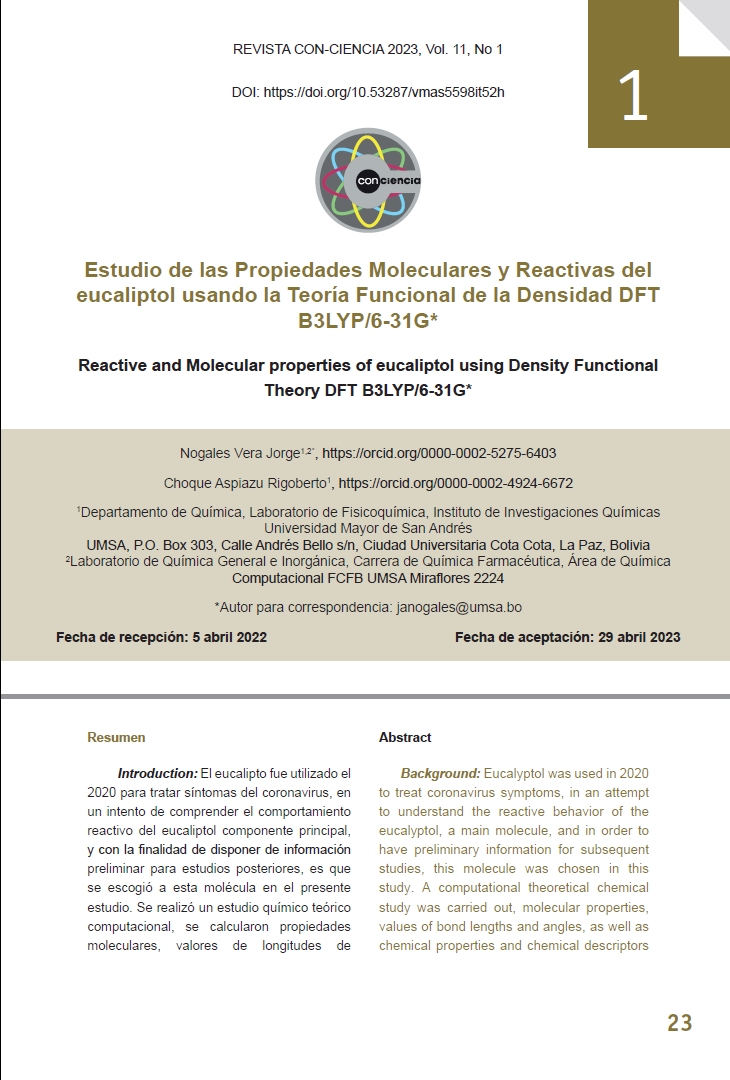Reactive and Molecular and properties of eucaliptol using Density Functional Theory DFT B3LYP/6-31G*
DOI:
https://doi.org/10.53287/vmas5598it52hKeywords:
Eucalyptol, 1,8 cineol, reactivity descriptors, Fukui functionAbstract
Introduction: A computational theoretical chemical study of 1.8 cineol or eucalyptol was carried out and its molecular properties were calculated. The values of bond lengths and angles were detailed, as well as chemical properties and chemical descriptors of interest in QSAR studies, of energies and reactivity, obtained by quantum mechanical methods using the Density Functional Theory DFT B3LYP/6-31G*. Objective: To determine the molecular properties and reactivity descriptors of 1,8 cineol using the Density Functional Theory (DFT). Method: A randomized block design was used with 4 treatments, two under vacuum, two in ethanolic medium and the European database reference, each treatment was performed in triplicate. Eucalyptol's structure was traced using the SPARTAN interface; was subjected to geometric optimization calculations initially of Molecular Mechanics to obtain the most stable structure, on these structures the DFT Density Functional Theory is applied using the base 6-31G*. Results: Regarding the intramolecular bond lengths in 1.8 cineol or eucalyptol, it was found that there is no significant statistical difference between the bond lengths in the 4 quantum treatments used with the reference one. Regarding the frontier orbitals, a band gap of 8.1 ev between the HOMO LUMO orbitals shows that the molecule is very stable, just as the band gap between the HOMO-1 and LUMO+1 orbitals of 9.8 ev indicates that it would take a lot of energy for an electronic transition to occur. Conclusion: Values of molecular properties were found, as well as chemical reactive properties of interest in QSAR structure-activity studies, and reactivity descriptors of eucalyptol or 1.8 cineol.






 Revista Con-Ciencia
Revista Con-Ciencia revista.conciencia.biofar
revista.conciencia.biofar Revista Con-Ciencia
Revista Con-Ciencia






